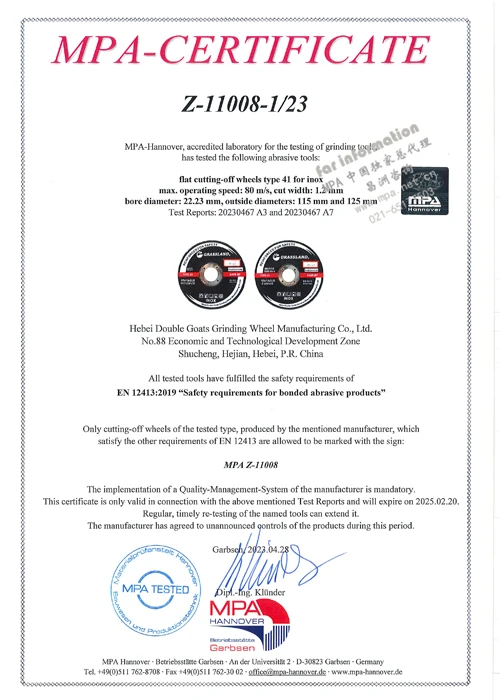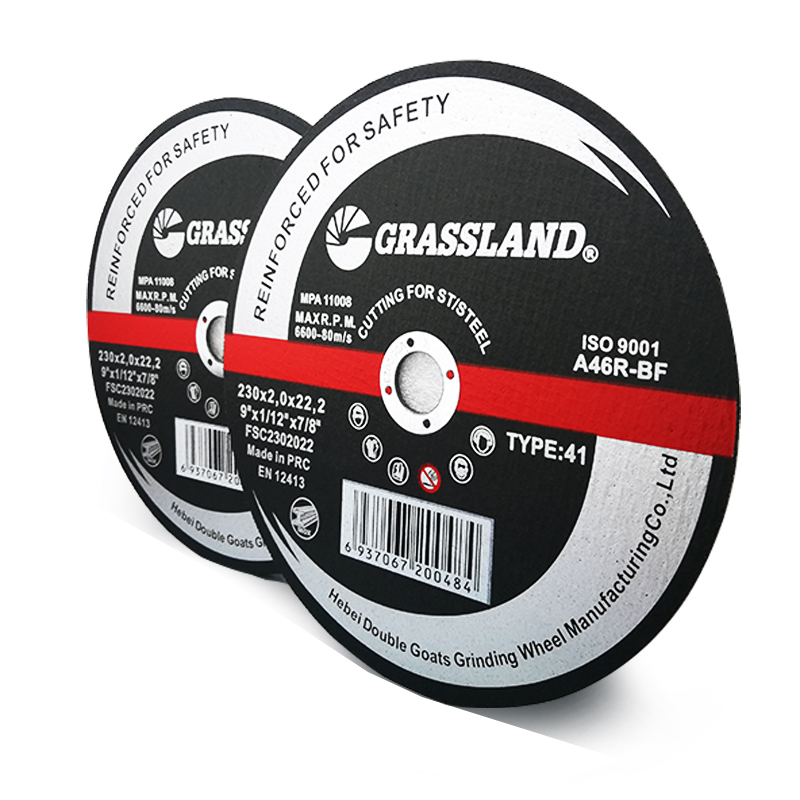Choosing the Right Grit Flap Disc for Welding
Welding is an essential process in many industries, from construction to automotive repair. For welders, achieving a clean, professional finish is crucial, but the effectiveness of the welding process is often influenced by the tools and equipment used. One of the most important tools in a welder's arsenal is the flap disc. Choosing the right grit flap disc can greatly enhance the quality of your welds and the efficiency of your work. This article will discuss the different grit sizes available, their applications, and factors to consider when selecting a flap disc for welding.
Understanding Grit Sizes
Flap discs are composed of abrasive cloth flaps mounted on a backing plate, and they come in various grit sizes. The grit size indicates the coarseness or fineness of the abrasive material. The lower the grit number, the coarser the disc; conversely, a higher grit number denotes a finer disc. Common grit sizes for flap discs include 40, 60, 80, 120, and 240.
- Coarse Grit Discs (40-60 grit) These are ideal for heavy material removal, such as when you need to grind down weld seams or remove rust and old paint. They are effective for shaping metals and are often used in the initial stages of welding preparation.
- Medium Grit Discs (80 grit) Medium grit discs offer a balance between material removal and finishing. They are suitable for blending welds and removing imperfections while still providing a relatively smooth surface. If you are working on a project that requires both heavy and light grinding, an 80-grit flap disc is a versatile choice.
- Fine Grit Discs (120-240 grit) These higher grit discs are used for finishing work. They can help achieve a polished surface and are perfect for final touches after welding. If your project requires a clean, aesthetic finish, fine grit discs should be your go-to.
Applications for Welding
When it comes to welding, the application significantly influences the choice of flap disc. For example
- Preparing Surfaces Before welding, it’s often necessary to prepare the material surfaces. In this case, a coarse grit disc can quickly remove rust or scale to ensure a clean weld.
what grit flap disc for welding

- Cleaning Welds Post-weld cleaning often requires a medium grit disc. It allows for the smoothing out of welds without over-grinding, which could weaken the joint.
- Finishing Touches For stainless steel or decorative metalwork, fine grit discs are ideal for polishing away any scratches or blemishes left from the welding process
.Factors to Consider When Choosing a Flap Disc
1. Material Type Different flap discs are designed for different types of metals. Make sure to select a disc suitable for the material you are working with (e.g., aluminum, steel, or stainless steel).
2. Welding Process Consider the type of welding you are doing. MIG, TIG, and stick welding each might require different flap discs based on the weld bead and the metal thickness being welded.
3. Tools Compatibility Ensure that the flap disc you choose is compatible with your grinder. The size of the disc should match the specifications of your tool for optimal performance.
4. Cooling Features Some flap discs come with cooling properties that prevent overheating. This can be beneficial during prolonged use, especially on heat-sensitive materials.
5. Personal Preference Ultimately, the best choice may also depend on personal comfort and the techniques you are accustomed to using.
Conclusion
Selecting the right grit flap disc for welding can make a significant impact on both the quality of your work and the efficiency of your process. By understanding the different grit sizes and their applications, as well as considering material types and project requirements, you can choose a flap disc that enhances your welding outcomes. Always remember that investing in high-quality flap discs will lead to better results and increased satisfaction in your welding projects.
Post time:Dec - 17 - 2024

















